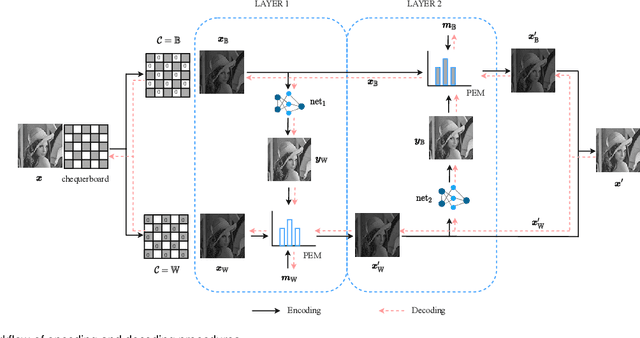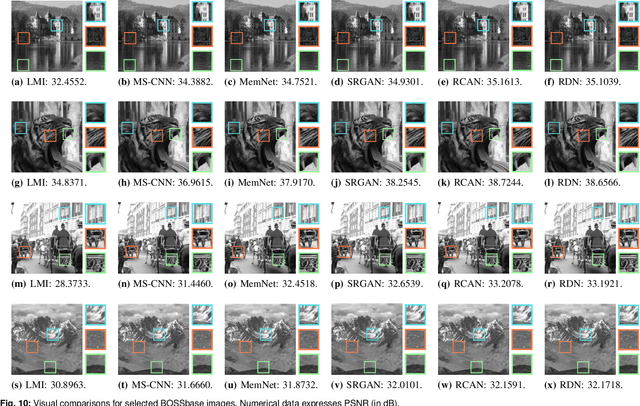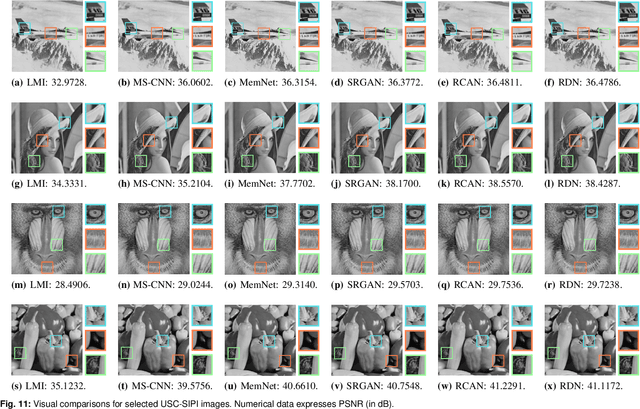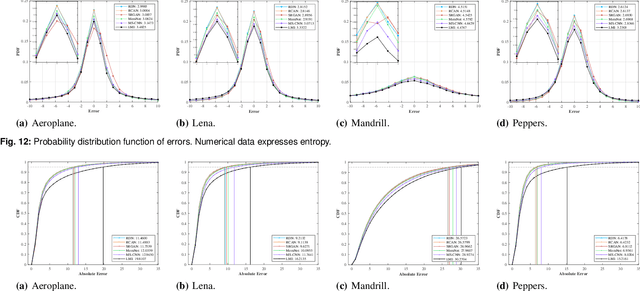Sisheng Chen
Less is More: Reversible Steganography with Uncertainty-Aware Predictive Analytics
Feb 05, 2022



Abstract:Artificial neural networks have advanced the frontiers of reversible steganography. The core strength of neural networks is the ability to render accurate predictions for a bewildering variety of data. Residual modulation is recognised as the most advanced reversible steganographic algorithm for digital images and the pivot of which is the predictive module. The function of this module is to predict pixel intensity given some pixel-wise contextual information. This task can be perceived as a low-level vision problem and hence neural networks for addressing a similar class of problems can be deployed. On top of the prior art, this paper analyses the predictive uncertainty and endows the predictive module with the option to abstain when encountering a high level of uncertainty. Uncertainty analysis can be formulated as a pixel-level binary classification problem and tackled by both supervised and unsupervised learning. In contrast to handcrafted statistical analytics, learning-based analytics can learn to follow some general statistical principles and simultaneously adapt to a specific predictor. Experimental results show that steganographic performance can be remarkably improved by adaptively filtering out the unpredictable regions with the learning-based uncertainty analysers.
Deep Learning for Reversible Steganography: Principles and Insights
Jun 13, 2021



Abstract:Deep-learning\textendash{centric} reversible steganography has emerged as a promising research paradigm. A direct way of applying deep learning to reversible steganography is to construct a pair of encoder and decoder, whose parameters are trained jointly, thereby learning the steganographic system as a whole. This end-to-end framework, however, falls short of the reversibility requirement because it is difficult for this kind of monolithic system, as a black box, to create or duplicate intricate reversible mechanisms. In response to this issue, a recent approach is to carve up the steganographic system and work on modules independently. In particular, neural networks are deployed in an analytics module to learn the data distribution, while an established mechanism is called upon to handle the remaining tasks. In this paper, we investigate the modular framework and deploy deep neural networks in a reversible steganographic scheme referred to as prediction-error modulation, in which an analytics module serves the purpose of pixel intensity prediction. The primary focus of this study is on deep-learning\textendash{based} context-aware pixel intensity prediction. We address the unsolved issues reported in related literature, including the impact of pixel initialisation on prediction accuracy and the influence of uncertainty propagation in dual-layer embedding. Furthermore, we establish a connection between context-aware pixel intensity prediction and low-level computer vision and analyse the performance of several advanced neural networks.
 Add to Chrome
Add to Chrome Add to Firefox
Add to Firefox Add to Edge
Add to Edge